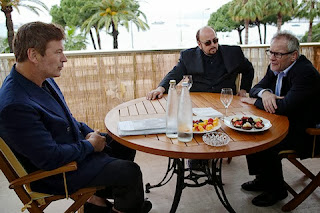Thoughts Inspired by the Documentary Seduced and Abandoned
During my hiatus from blogging, I've said goodbye to neighboring friends and family and relocated to a different state. It hasn't been easy trying to navigate a new area and put down roots. But on the upside, I've had plenty of time to practice guitar, read and catch-up on my T.V. time!
As I search for a new career opportunity, I am faced with the daunting challenge of finding something I enjoy doing that can also pay the bills. It is the constant struggle of an artist to make meaningful art in a commercial world.
My inspiration for this post comes from Seduced and Abandoned, a documentary I watched on HBO, which is doing a Fall Documentary Series. It follows actor Alec Baldwin and director James Toback at the Cannes Film Festival as they pitch a Last Tango in Paris-inspired film to star Baldwin and Neve Campbell. It is essentially a movie about making a movie.
 |
While the overall tone is light-hearted, it takes a sobering look at the film industry, which is after all an industry. On one side are the idealistic directors, who have a vision for the film they want to make, and on the other side are the producers and backers, who are looking at the numbers, reducing actors, directors and scripts to mere digits in an equation.
The film starts with a quote by Orson Welles:
"I look back on my life and it's 95% running around and trying to raise money to make movies and 5% actually making them."
The documentary suggests many filmmakers are going with independent film companies or finding individual investors who share their vision. It is becoming necessary to avoid making concessions like using a certain actor, changing the plotline or various sorts of nepotism.
For me, this film raises many questions about art and commerce. To what degree are these concessions okay or even necessary? To what degree should an artist fight for their vision? And at what point are they just selling out?
These are not questions that are easily answered. I find that I keep running into these questions in my own life. During my time working as a freelance designer, I was sometimes caught between trying to make clients happy, while also trying to stay true to my aesthetic.
Is it possible for an artist to succeed at their craft without making some concessions along the way? While I'm not going to say it's impossible, it is at least very difficult. I guess it's up to every artist to ask themselves how far they are willing to go.
Sources: FlavorWire, HBOWatch
No comments:
Post a Comment